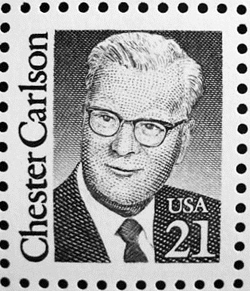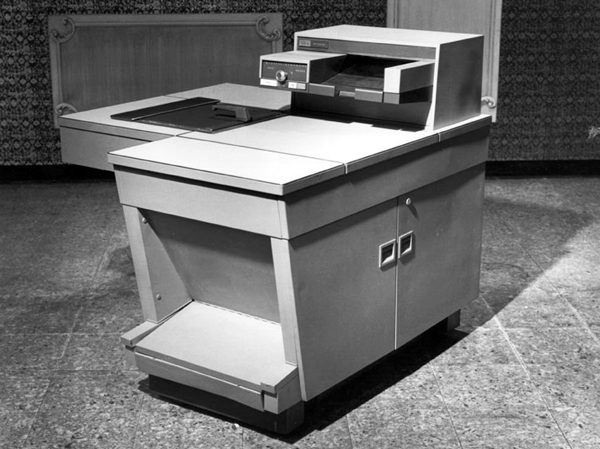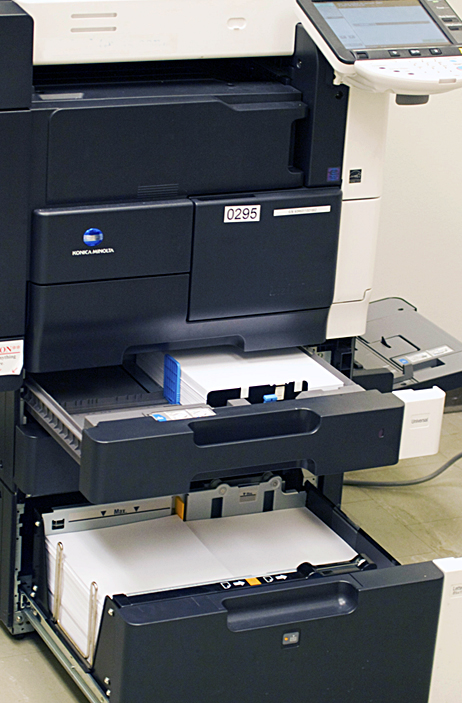Chester Carlson
Today, we copy a page. The University of Houston's College of Engineering presents this series about the machines that make our civilization run, and the people whose ingenuity created them.
Just as the British keep calling vacuum cleaners Hoovers, I shun the word photocopier. I still make Xerox copies, though I wonder how much longer we'll be using copy machines. Already, when I copy from a library book, the library scanner emails an electronic copy to my office. By the time this episode reaches reruns, that sort of thing is likely to be the norm.
 But, the latter 20th century was the Xerox era. And, just as it matured in 1968, 62-year-old Chester Carlson had a few hours between meetings. He went to a movie that afternoon and, as he watched images up on the screen, he died of a heart attack.
But, the latter 20th century was the Xerox era. And, just as it matured in 1968, 62-year-old Chester Carlson had a few hours between meetings. He went to a movie that afternoon and, as he watched images up on the screen, he died of a heart attack.
Carlson had lived inside himself. Images, loneliness, and workaholism had themed his life. His parents fell ill when he was young. From age 13, he worked to help support his desperately poor family and put himself through school. He managed to graduate from Cal. Tech during the Depression, then struggled to stay employed while poverty swirled about him.
He'd put out a magazine for science-minded students in high school and begun thinking about the thorny problem of including images in it. Now, working for Bell Labs, he spent all his off hours in his kitchen chemistry lab. He knew he could invent a cheap way to reproduce images on paper, electrostatically.
Bell Labs finally fired Carlson, but he found work with another company and kept on. He patented a copying process in 1937, before he'd really figured out how to make it work. Then he hired a German refugee, Otto Kornei, to help him. They finally managed to reproduce an inked message by electrostatic means. But Kornei saw little future in it and he went on to a regular job. Carlson spent the next six years looking for corporate backing.
Battelle finally bought into his patent and Carlson vanished into the work of perfecting the process. Then Battelle gave up on it, but a company called Haloid bought the rights. They also hired Carlson and turned to a Greek scholar for help in naming the process. Since it didn't use photographic liquids the fellow suggested basing the name on the Greek word for dry — xeros. He suggested that they call it Xerography, and Haloid simplified that to Xerox.
It took another 13 years to build a really successful Xerox machine. And Carlson was suddenly worth 150 million dollars. He spent his last years working as hard at giving money away as he had earning it in the first place. But money wasn't the point for him. He'd finally succeeded in his struggle to gain self-acceptance, and to make reproducible, the images that danced in his head.

The 1961 Halloid XeroX 914
So I should be calling those copies Carlsons, not Xeroxes. For he built a fifty-year bridge from an old world of typewriters and carbon paper into a new world yet to come. I expect that new world will be one where paper is only an archival backup — one where daily commerce moves almost wholly to our digital screens.
I'm John Lienhard at the University of Houston, where we're interested in the way inventive minds work.

A modern photocopier paper-eater with its many drawers of paper.
See the Wikipedia entries for Chester Carlson and Xerox.
Golembeski, D.J., Struggling to Become an Inventor. American Heritage of Invention and Technology, Winter 1989, pp. 8-15.
This is a greatly revised version of Episode 239.
Images Xerox 914 courtesy of Wikimedia Commons, US postage stamp, photo of paper trays in a modern photocopier by J. Lienhard.
Listener Jean Krchnak raised a question which I left unanswered in this episode; but which might bother anyone -- namely "What movie was Carlson watching when he died?" It was, He Who Rides a Tiger, a British movie starring then-31-year-old Dame Judi Dench.